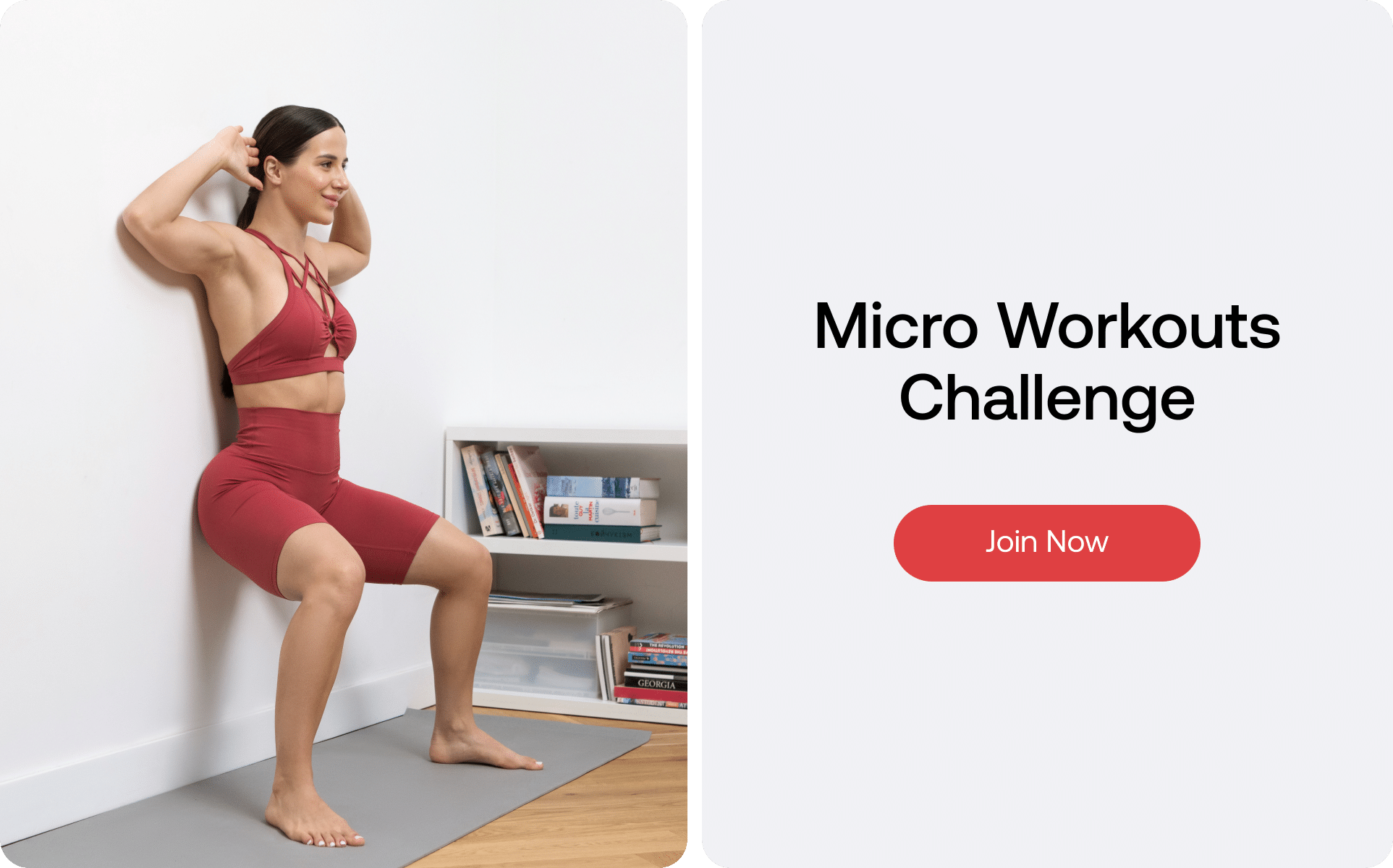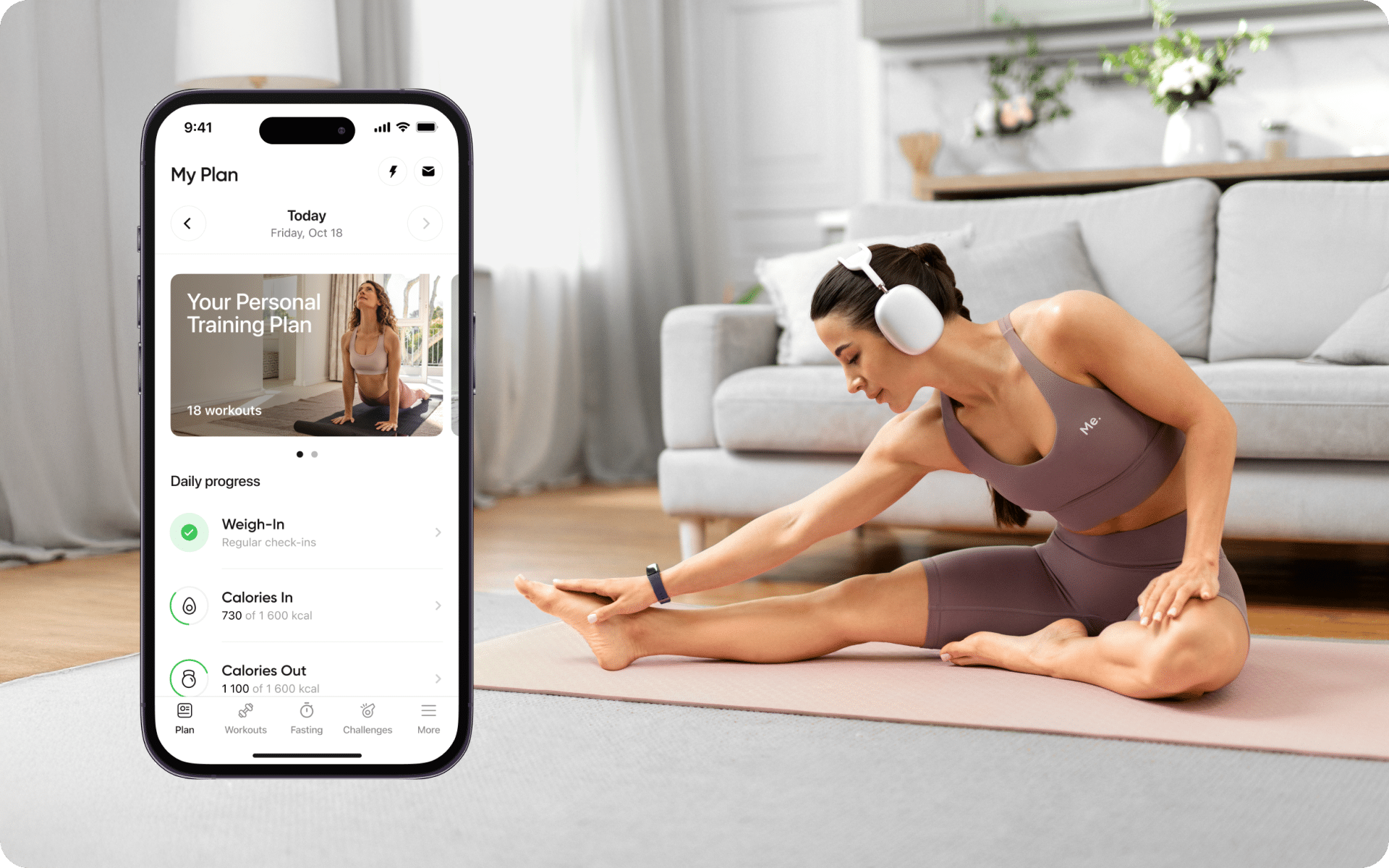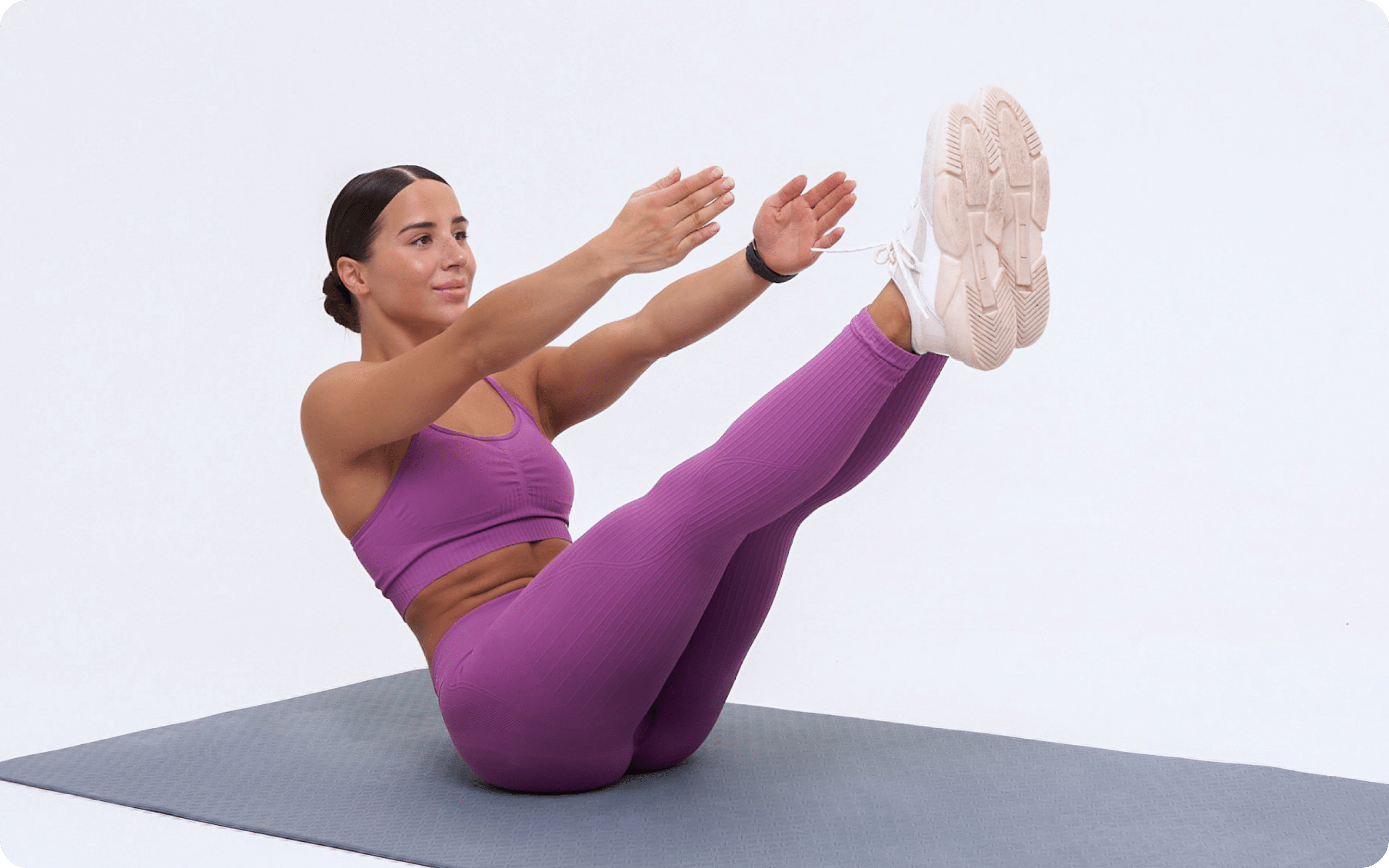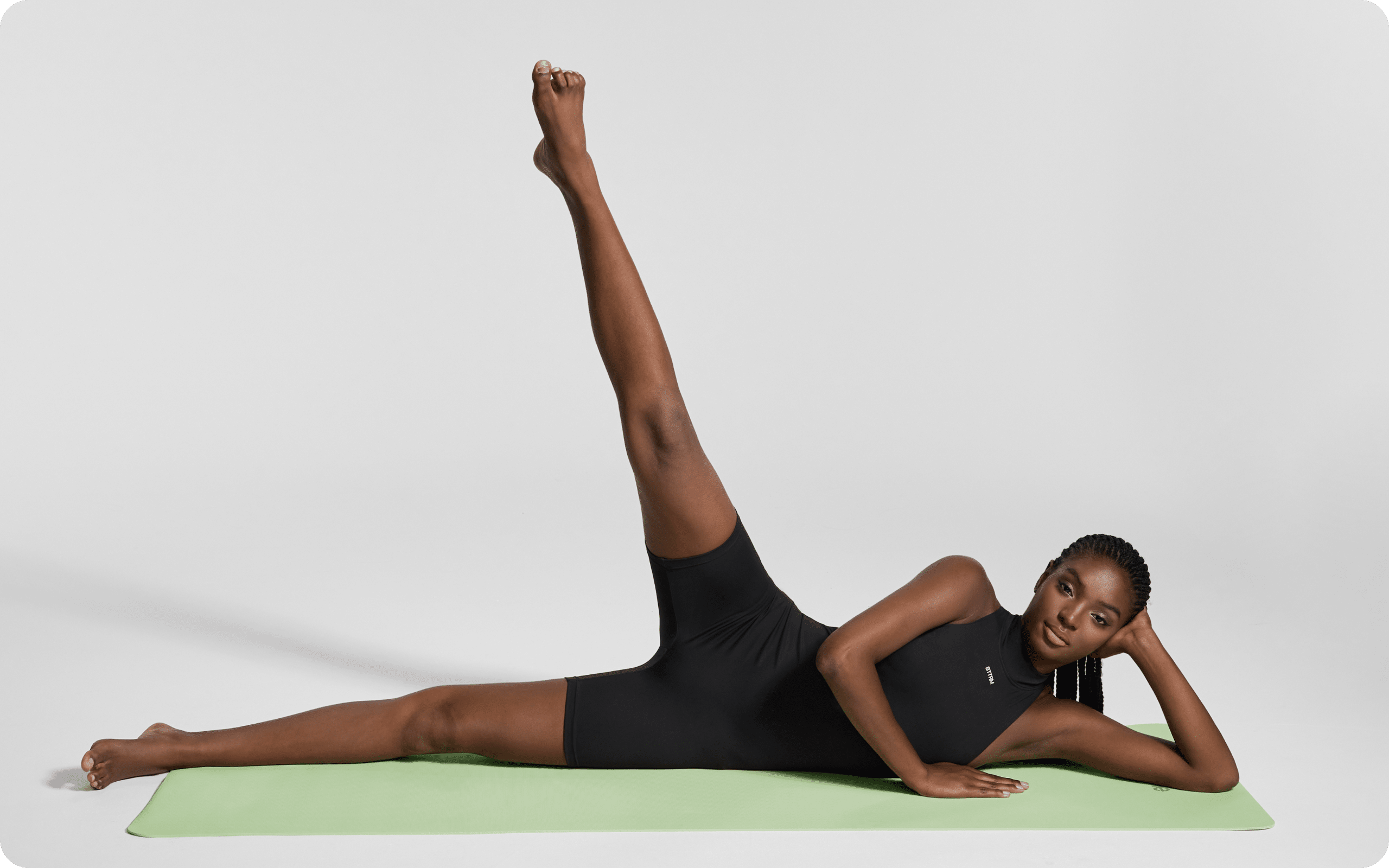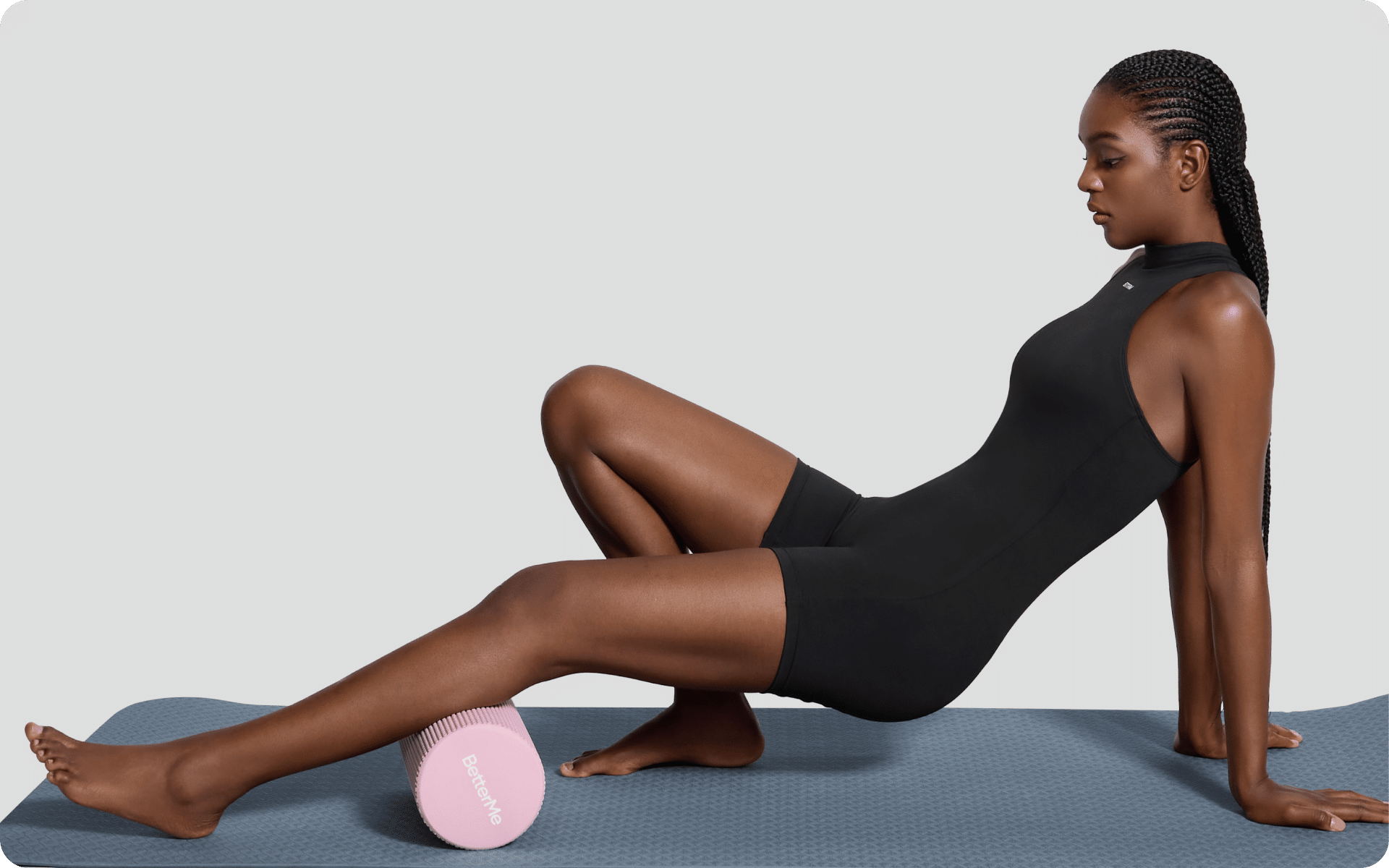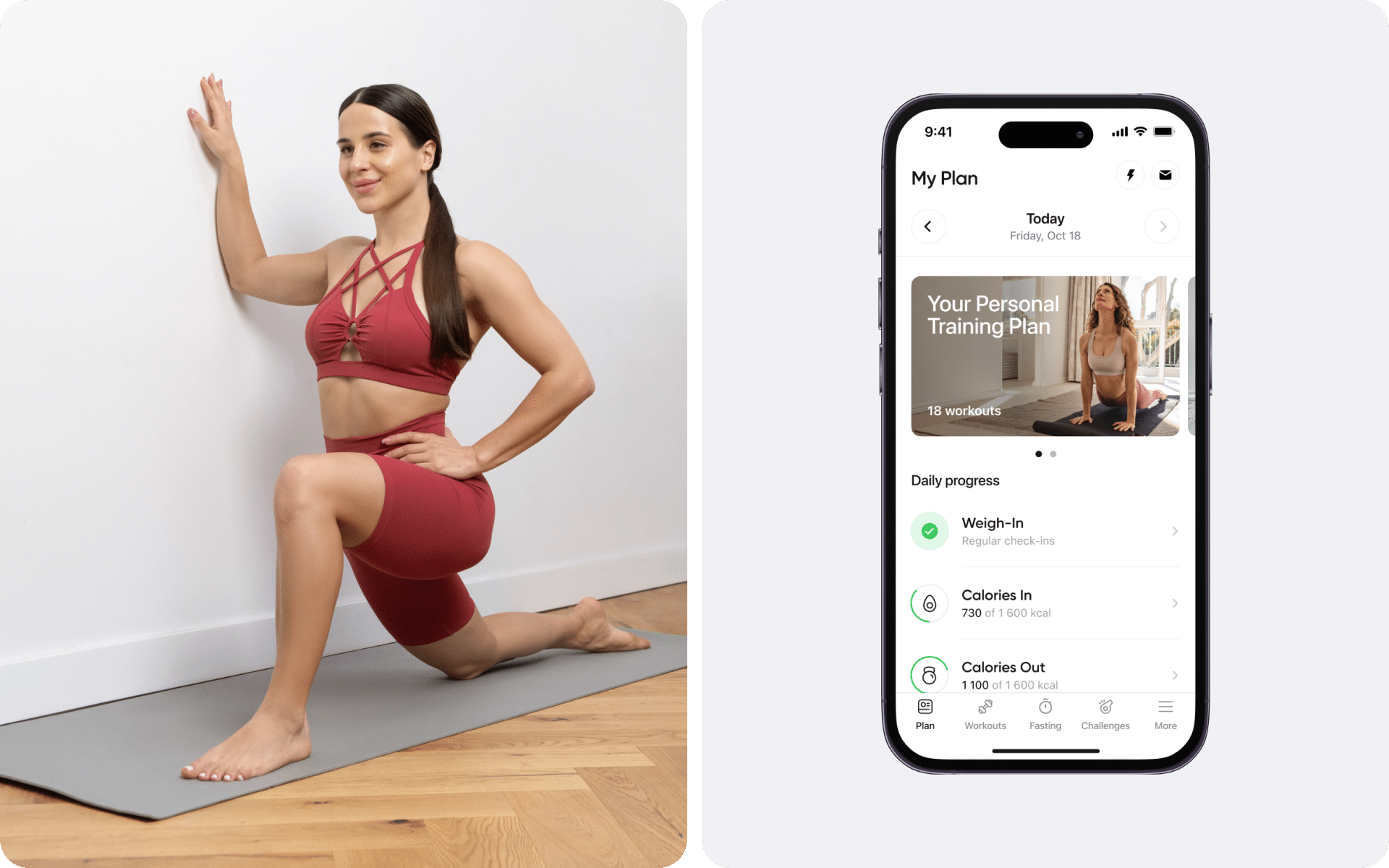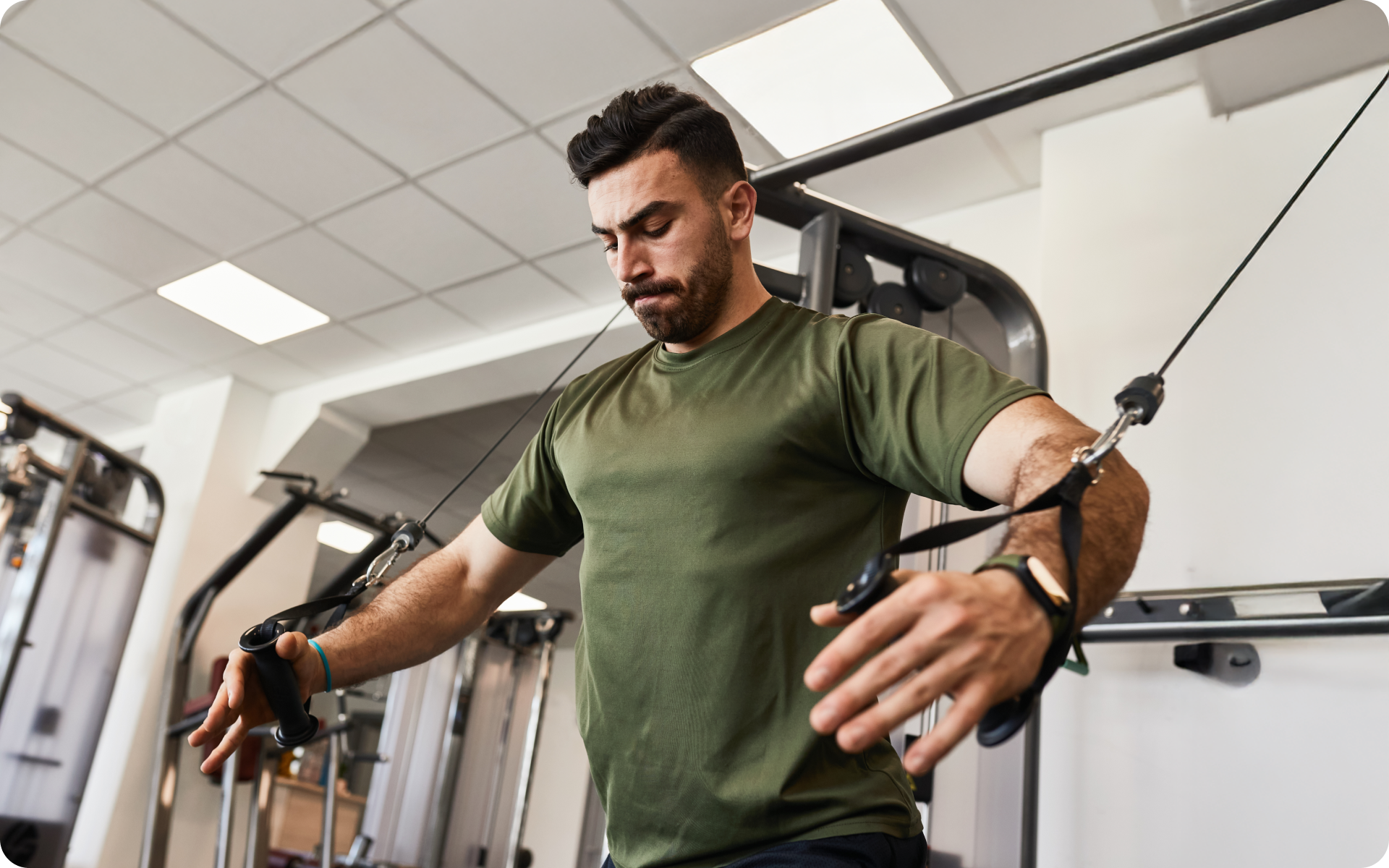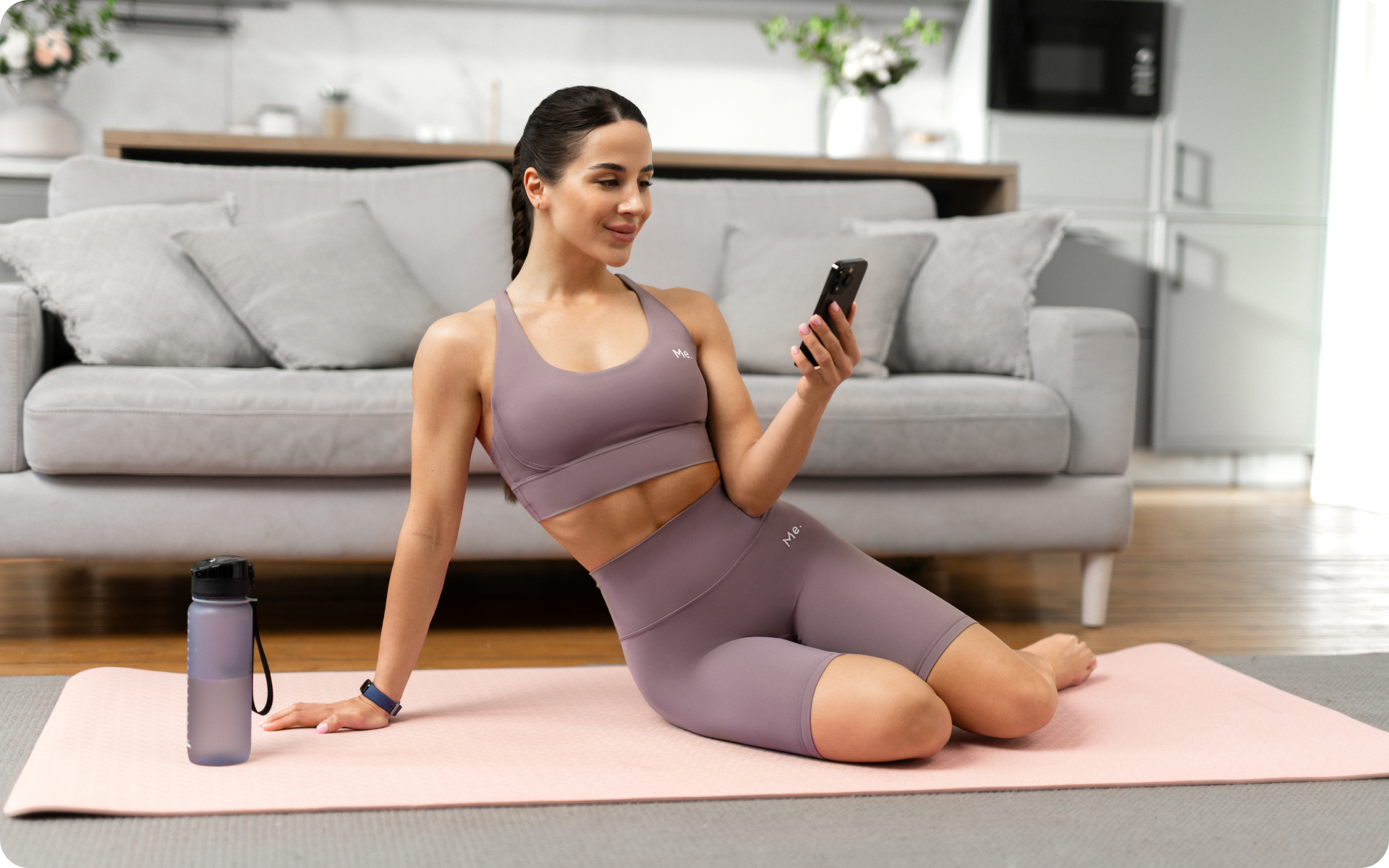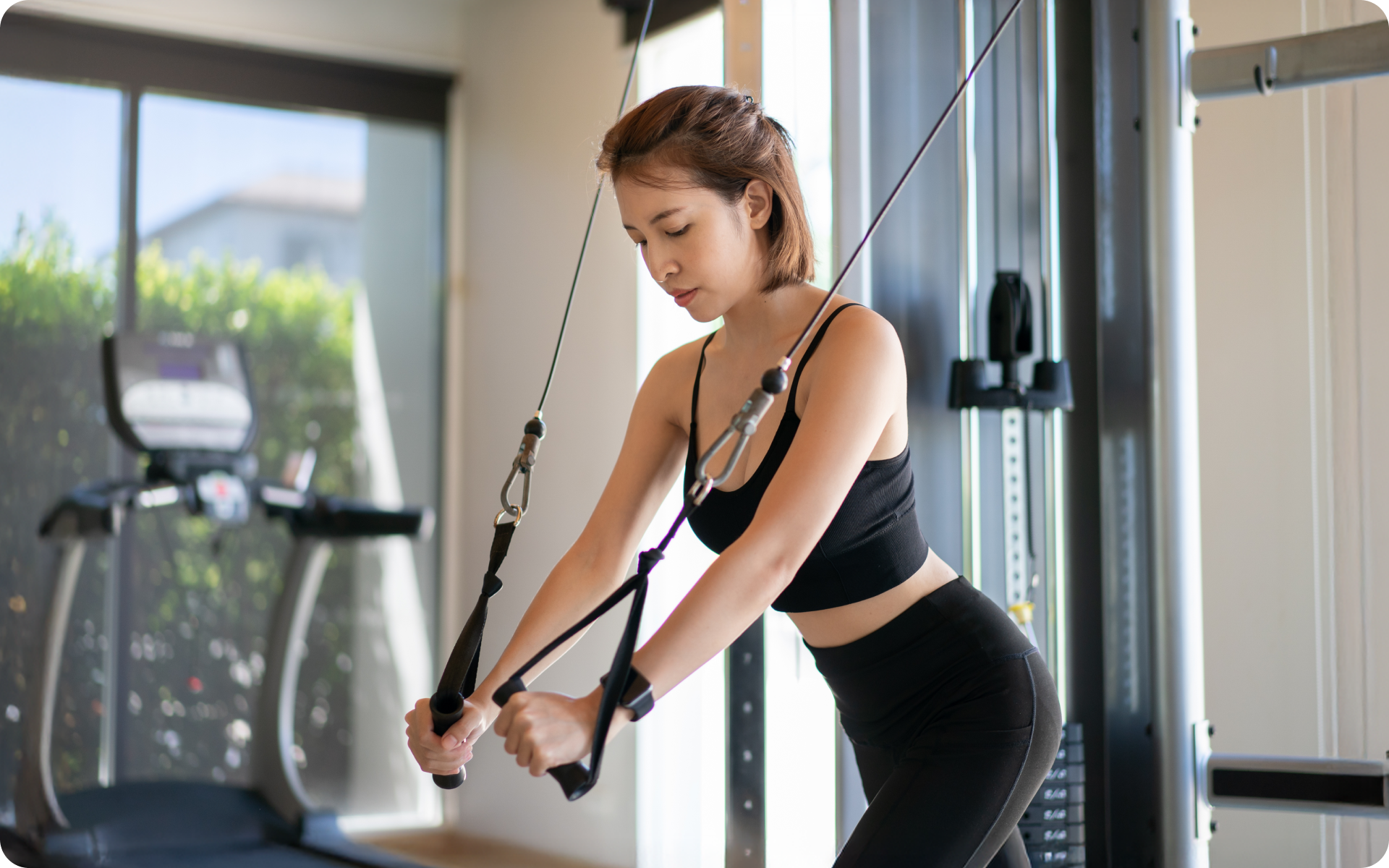Hey there fitness enthusiasts!
If the thought of heavy weights and complicated gym equipment makes you want to hit snooze on your workout plans, we’ve got just the thing for you – resistance bands!
These colorful, stretchy bands are like the superheroes of the fitness world. Designed to be portable and versatile, the resistance bands provide a full-fledged workout and can enhance your strength training goals by two-fold. They offer a low-impact alternative to traditional weights, while providing constant tension through the workout sessions.
Adding resistance band full-body workouts to the regime will leave you feeling energized, challenged, and maybe a little sore in all the right places.
So, grab your bands, make some space, and dive into this article to learn more about resistance band exercises. Your body will thank you!
Can You Get a Full-body Workout Using Resistance Bands?
The biggest advantage of using resistance bands is that they can target every muscle group of the body, ranging from arms to legs. While they may seem like an ordinary tube, they do much more than just stretch. Resistance bands offer resistance and exert tension on your muscles, helping them grow (1). In short, you can get a full-body workout using resistance bands.
Among many exercises that make up the full-body resistance band workouts, one of the best is the woodchopper (3). This exercise targets your core, arms, thighs, and shoulders effectively.
To perform this:
- Get a resistance band and place it on the floor.
- Put your right foot on the middle of the band and grip the ends with each hand.
- Now, hold your hands in the air near your knees while gripping the band. This is the starting position.
- Engage your core and bring your hands toward your left shoulder diagonally by stretching the resistance band and extending your arms.
- Return to the starting position slowly and repeat the motion again.
- You must engage your core to rotate your body.
- Perform the woodchopper exercise for 10-12 reps on one side and then repeat with the other.
Betterme will keep you laser-focused on your weight loss journey! Nutrient-packed meal plans, fat-blasting workouts, galvanizing challenges and much more. Try using the app and see for yourself!
How Long Should a Full-body Resistance Band Workout Be?
If you are a complete beginner, you must start slowly. For starters, you can aim for 10 minutes of strength training at home with resistance bands. This can prevent you from overstressing your muscles, especially if your muscles are not used to training. As you get comfortable with 10 minutes, you can gradually increase the duration.
The duration, however, depends on the intensity of your workout. If you perform high-intensity resistance band exercises, 15 minutes should be enough, but if you are performing light-intensity exercises, 30 minutes works well (2).
Generally, the US Department of Health and Human Services suggests doing two strength training sessions per week focusing on all major muscle groups in the body, including legs, chest, back, core, and arms (7). Given this, you should aim to do two resistance band workouts for 30 minutes weekly.
Which Resistance Band Is Best For a Full-body Workout? (long/short)
Resistance bands are available in different sizes, materials, and variety, each designed for separate functions. When considering resistance bands for exercises, you may normally wish for a band that can help you achieve a full-body workout. But, the question is: which resistance band should you choose? Long or short.
Keep scrolling to find out!
Long Resistance Bands
Long resistance bands, tube bands, or loop bands are the most common bands. These are designed to be stretchy and flexible. These bands either come in a line or are one continuous loop that can hook any surface.
They substitute dumbbells and can perform various exercises like bicep curls, hammer curls, etc. Plus, they can be used to assist in assisted exercises like pull-ups. Loop bands can anchor to any handle or surface and can be used to perform leg or core exercises.
For compound exercises that target numerous muscular groups, such as the arms, shoulders, back, and legs, long resistance bands can be great. Lastly, long resistance bands are ideal for performing dynamic exercises like woodchoppers, lateral lunges, and walking lunges.
Short Resistance Bands
Short resistance bands or mini bands are smaller than normal sizes. These are mostly used for lower body workouts, as they fit tightly around legs or ankles. They are ideal for performing squats, lunges, or glute bridges. The best aspect of short resistance bands is that you can carry them almost anywhere because they are lightweight and portable.
In a nutshell, long resistance bands are the best for doing a full-body workout. Invest in a pair of good-quality resistance bands to perform intense strength training workouts easily for a long time.
What Are the Best Resistance Bands Full Body Workout for Beginners?
Now that you have learned about resistance bands, let’s chart out the best resistance band exercises for a full body workout at home. These exercises should be done for 3 sets of 15 reps each with 45 seconds of rest between sets (4).
Reverse Lunge
Reverse lunges are suitable for working out the thighs and legs. To perform a reverse lunge:
- Hold a resistance band and step on it with your right foot shoulder-width apart. Place your hands gripping the ends on your shoulders. You must maintain a straight posture and be upright.
- Bend and step back with your left foot, lowering your left knee almost to the floor.
- Lean your torso slightly forward, by exerting weight on your right leg.
- Return to the starting position by stepping your left foot back.
- You must keep the hands on your shoulders throughout the exercise.
- Perform reverse lunges for 15 reps with your right leg and then repeat the same with your other leg.
Bent-Over Row
The next exercise for a full-body workout with resistance bands with handles is a bent-over row that targets your back, biceps, and core. To perform a bent-over row with a resistance band:
- Hold the resistance band and step on the band shoulder-width apart.
- Bend forward by slightly bending your knees, pushing your hips back and leaning your torso forward.
- Crisscross the ends in a way that they look like they form an X.
- Make sure your back is flat and your feet are firmly placed on the ground.
- Hold the band near your knees. This is the starting point. Begin by pulling the crisscrossed handles towards your chest almost near your armpits. Your elbows must be bent at a 90-degree angle and held by your sides.
- Squeeze your shoulder blades together to feel extra resistance.
- Lower the ends back near the knees and repeat for 15 reps.
Push up
Push ups are traditional yet quite rewarding when you add a resistance band to the mix. Here is how you can do a pushup with a resistance band:
- Get into the push up position by placing your feet together on the floor.
- Place your hands on the floor shoulder-width apart. They must be straight.
- Your back must be flat, and your posture should be as if your body makes a straight line.
- Wrap the resistance band across your shoulders by gripping it tightly under your hands on the floor.
- Make sure you exert enough pressure on the band so it doesn’t slip away during the exercise.
- Lower your body towards the floor by bending your elbows.
- Hold this position for a second and then return to the starting position.
- Do push ups for 15 reps and then proceed to the next exercise.
Overhead Press
Overhead press is an exercise for the upper body. To perform an overhead press:
- Stand on the floor with your feet shoulder-width apart. Step on the resistance band and hold it in your hands.
- Hold the resistance band near your shoulder with your right hand and extend your left hand gripping the band overhead with the arm near your left ear.
- Lower the extended arm near your shoulder while raising the bent hand overhead. You should be moving both handles simultaneously in opposite directions.
- Make this motion for 15 reps.
Reverse Curl
Like the overhead press, reverse curl also complements a good upper body workout. Follow these steps to perform a reverse curl:
- Stand on the floor with your feet shoulder-width apart. Step on the resistance band and hold it in your hands.
- Your hands must be gripping the ends near your thighs.
- Raise hands to your shoulders by keeping your elbows by your sides, just like you perform a bicep curl.
- Your palms must be facing, down and away from you while performing the exercise.
- Lower hands back towards the hips and repeat this for 15 reps.
Squats
Squats are the most loved exercises for legs and thighs. Add a little twist by doing them with a resistance band. Here is how you can perform squats with a resistance band:
- Hold the resistance band handles at shoulder level, and stand on the center of the band with your feet shoulder-width apart.
- Get into the squat position by slowly lowering yourself. Go as low as you can.
- Engage your core and keep your back straight.
- Maintain this position for a second and then return to the starting position, keeping your back straight throughout the exercise
Rear Delt Fly
The rear delt row is an upper back resistance band exercise to build muscle. To do the rear delt row with the band:
- Stand on the floor with your feet shoulder-width apart. Step on the resistance band and hold it in your hands.
- Bend forward by bending your knees and leaning your torso forward.
- Crisscross the ends in a way that they look like they form an X.
- Make sure your back is flat and your feet are firmly placed on the ground.
- Hold the band near your knees. This is the starting point.
- Raise the crisscrossed ends outward to shoulder height while maintaining a straight back.
- Your arms must be extended in the air as if they form a straight line with your body.
- Lower the crisscrossed ends back near the knees and repeat for 15 reps.
Side Bridge
Side bridges are effective hip and leg workouts. Follow these steps to make a side bridge:
- Get into the side plank position by supporting your body with your right hand and your right foot on the ground.
- Rest your left leg on top of your right leg. Your right hand must be placed on the resistance band firmly.
- Extend your left arm high in the air gripping the other end of the band and face it.
- The band must be stretched tightly. Lower the extended arm holding the band until it reaches below your body near your other hand.
- Repeat again by raising the hand in the air.
- Do 15 reps with the left hand and then switch to the other hand.
Note: You must do this resistance band full body workout for beginners by warming up adequately for 5 minutes. Then, finish the sets by cooling down with stretches.
Read more: Fire Up Your Muscles With Effective Resistance Bands Leg Workout
Are Bands Better Than Weights?
Resistance bands and free weights offer ideal resistance and endurance, making them must-have equipment for strength training. If you are stuck and confused about the equipment you should invest in, keep reading. Below, we have discussed some factors you should consider when comparing bands and weights.
Let’s delve into the specifics (5):
Resistance
When it comes to varying resistance levels, resistance bands take the lead. You can use multiple resistance bands simultaneously giving your muscles a unique workout. On the contrary, you can only use one weight at a time which may become a bit costly if you want to work out with multiple weights simultaneously.
Portability
The biggest advantage of resistance bands is their portability. You can lift, fold, and store them easily in your backpack and take them anywhere. Weights take up space and are a bit heavy so it becomes impossible to carry them.
Risk of Injuries
Another amazing aspect of resistance bands is that they reduce likelihood of joint damage as they are highly flexible and do not reach the resistance level of free weights.
Weight Estimation
Since resistance bands offer variable weight and resistance, estimating your daily progress becomes challenging. On the other hand, you can easily analyze how much you are lifting with free weights. In this regard, weights take the lead.
Cost
Most importantly, when it comes to cost, resistance bands are much cheaper than free weights. This makes them a trending piece of gym equipment, as the maintenance cost is relatively low.
To sum up, resistance bands can be better than weights as their cost of maintenance and price is lower and they offer a safer way to exercise compared to weights.
BetterMe app will kick you out of the mental funk, shake off your extra weight, rid you off your energy-zapping habits, and help you sculpt the body of your dreams. Intrigued? Hurry up and change your life for the better!
What Are the Disadvantages of Resistance Bands?
While resistance bands offer many advantages, there are some potential downsides to using bands (6). Resistance bands can break since they are made of lightweight material. To offset this, you could invest in a good-quality resistance band.
While you can work out with variable resistances by using multiple resistance bands, it might be harder to estimate how much resistance you applied. This is easily solved if you start with lower-resistance bands, and move to heavy-intensity ones as you improve your performance.
Is It Okay to Use Resistance Bands Every Day?
Resistance bands are designed to be safe and risk-averse. You can work out daily with resistance bands, as long as you stay within the required limit and do not overtrain your muscles. It is important to take 1-2 rest days each week for optimal health and results. You can make the most of your resistance bands full body workout by warming up and cooling down after every session.
How hard and how long you use your resistance bands is important. If you’re going all-out with tough, full-body workouts daily, your body might need more time to chill. But if you’re doing shorter, less intense sessions, you could do them more often. It is like finding the right balance between giving your muscles a break and keeping things easy-peasy.
Read more: 8 Beach Exercises To Do for a Full Body Workout
FAQs
Are resistance bands better than squats?
Doing squats with resistance bands is better, as bands exert more pressure on your thighs, helping you build bigger muscles compared to body weight alone. They may also keep your glutes activated throughout the exercise, compared to doing standard squats.
Can you use resistance bands for belly fat?
Yes, you can use resistance bands to burn belly fat by doing full body workouts that increase your heart rate and create an overall calorie burn. Since resistance bands offer more resistance, your body will work more, which may increase metabolism, leading to rapid fat burn.
Can you build big muscles with resistance bands?
Yes, you can build big muscles with resistance bands by using maximum-strength resistance bands and making the workouts challenging. The more resistance you exert, the more your muscles will grow.
The Bottom Line
Using resistance bands for a full-body workout is super cool!
They are easy to carry, make your muscles work hard, and you can do many different exercises. Just remember to listen to your body, change up your exercises, and find the right balance between working out and resting.
Resistance bands are truly the best tools for doing a full-body workout. Whether at home or traveling someplace, you can work out easily with resistance bands. Like every exercise routine, it is important to consult your fitness trainer to discuss your goals, preferences, and medical history to chart a safe route.
DISCLAIMER:
This article is intended for general informational purposes only and does not serve to address individual circumstances. It is not a substitute for professional advice or help and should not be relied on for making any kind of decision-making. Any action taken as a direct or indirect result of the information in this article is entirely at your own risk and is your sole responsibility.
BetterMe, its content staff, and its medical advisors accept no responsibility for inaccuracies, errors, misstatements, inconsistencies, or omissions and specifically disclaim any liability, loss or risk, personal, professional or otherwise, which may be incurred as a consequence, directly or indirectly, of the use and/or application of any content.
You should always seek the advice of your physician or other qualified health provider with any questions you may have regarding a medical condition or your specific situation. Never disregard professional medical advice or delay seeking it because of BetterMe content. If you suspect or think you may have a medical emergency, call your doctor.
SOURCES
- 5 Potential Health Benefits of Resistance Band Training (2024, everydayhealth.com)
- Everything You Need to Know About Resistance Band Workouts: What Makes Them Effective, How to Get Started, and How to Up the Intensity (2024, everydayhealth.com)
- Full Body Resistance Band Workout: The Ultimate Guide (2023, litmethod.com)
- Full-Body Resistance Band Workout You Can Do Anywhere (2023, anytimefitness.com)
- Resistance Bands vs. Free Weights: Which One Is Better? (2023, litmethod.com)
- Resistance Band Training Pros and Cons (2023, resistancebandtraining.com)
- The Physical Activity Guidelines for Americans (n.d., health.gov)

